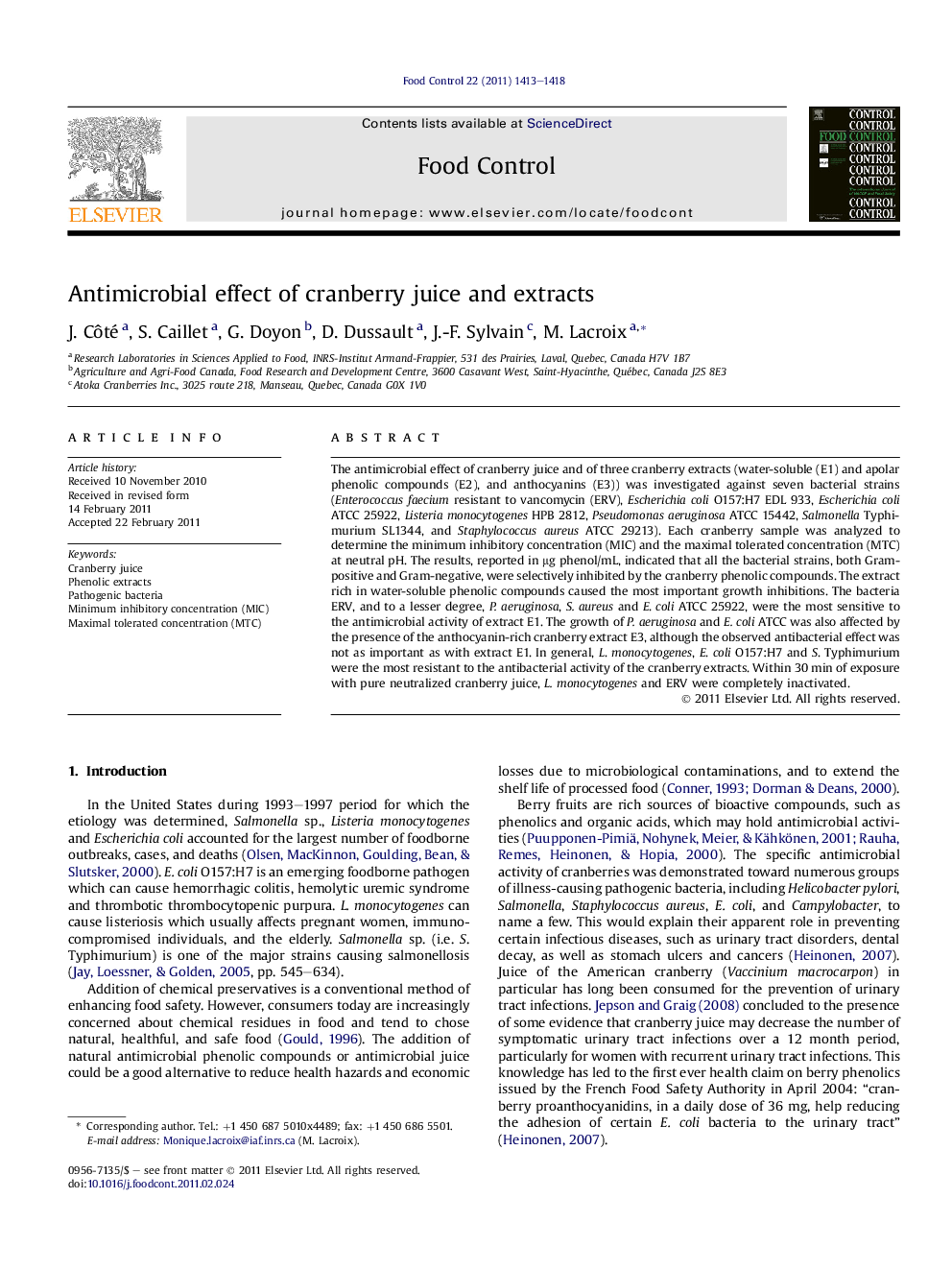| کد مقاله | کد نشریه | سال انتشار | مقاله انگلیسی | نسخه تمام متن |
|---|---|---|---|---|
| 6394591 | 1330470 | 2011 | 6 صفحه PDF | دانلود رایگان |

The antimicrobial effect of cranberry juice and of three cranberry extracts (water-soluble (E1) and apolar phenolic compounds (E2), and anthocyanins (E3)) was investigated against seven bacterial strains (Enterococcus faecium resistant to vancomycin (ERV), Escherichia coli O157:H7 EDL 933, Escherichia coli ATCC 25922, Listeria monocytogenes HPB 2812, Pseudomonas aeruginosa ATCC 15442, Salmonella Typhimurium SL1344, and Staphylococcus aureus ATCC 29213). Each cranberry sample was analyzed to determine the minimum inhibitory concentration (MIC) and the maximal tolerated concentration (MTC) at neutral pH. The results, reported in μg phenol/mL, indicated that all the bacterial strains, both Gram-positive and Gram-negative, were selectively inhibited by the cranberry phenolic compounds. The extract rich in water-soluble phenolic compounds caused the most important growth inhibitions. The bacteria ERV, and to a lesser degree, P. aeruginosa, S. aureus and E. coli ATCC 25922, were the most sensitive to the antimicrobial activity of extract E1. The growth of P. aeruginosa and E. coli ATCC was also affected by the presence of the anthocyanin-rich cranberry extract E3, although the observed antibacterial effect was not as important as with extract E1. In general, L. monocytogenes, E. coli O157:H7 and S. Typhimurium were the most resistant to the antibacterial activity of the cranberry extracts. Within 30 min of exposure with pure neutralized cranberry juice, L. monocytogenes and ERV were completely inactivated.
Journal: Food Control - Volume 22, Issue 8, August 2011, Pages 1413-1418